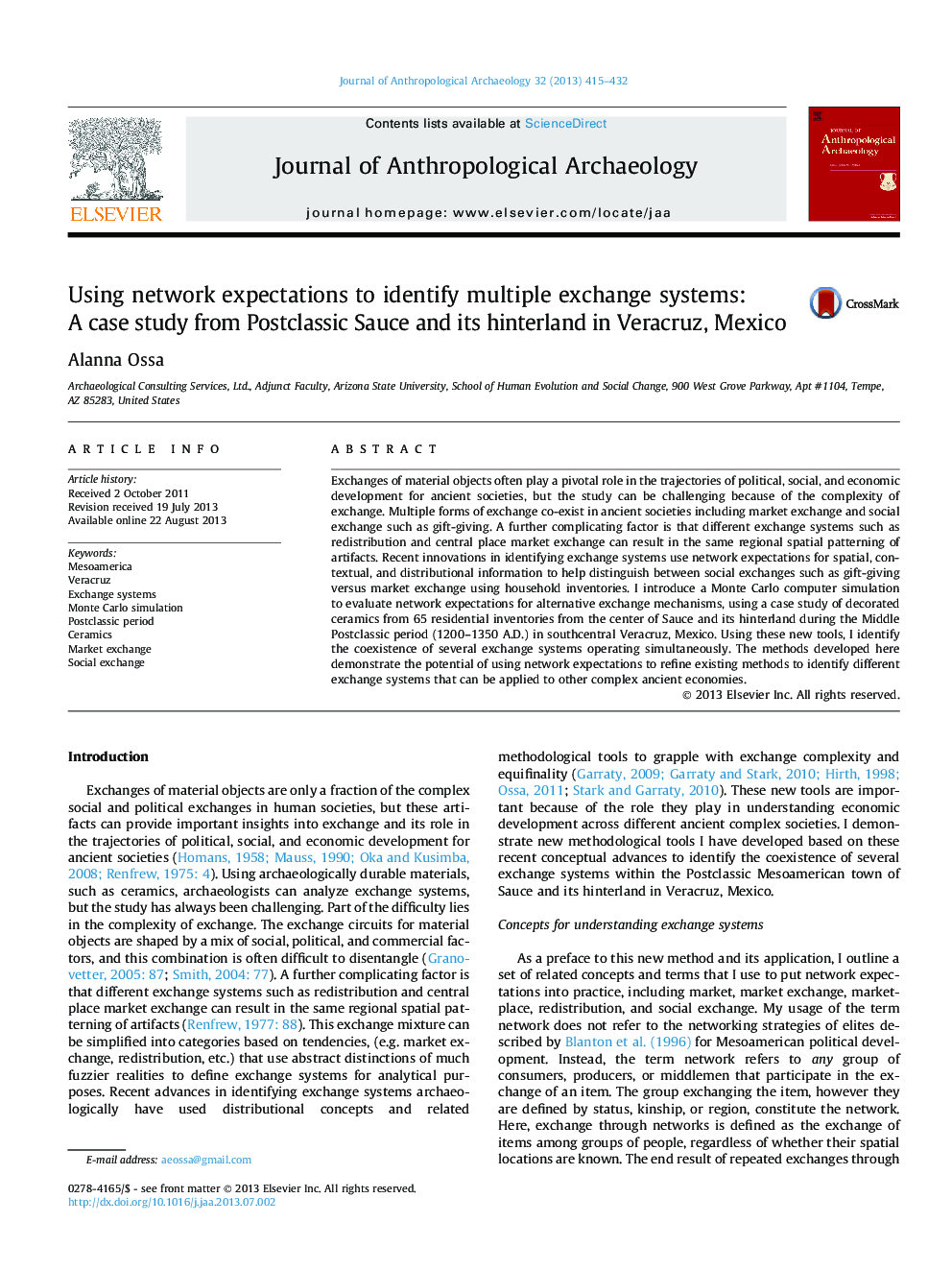| Article ID | Journal | Published Year | Pages | File Type |
|---|---|---|---|---|
| 10498704 | Journal of Anthropological Archaeology | 2013 | 18 Pages |
Abstract
Exchanges of material objects often play a pivotal role in the trajectories of political, social, and economic development for ancient societies, but the study can be challenging because of the complexity of exchange. Multiple forms of exchange co-exist in ancient societies including market exchange and social exchange such as gift-giving. A further complicating factor is that different exchange systems such as redistribution and central place market exchange can result in the same regional spatial patterning of artifacts. Recent innovations in identifying exchange systems use network expectations for spatial, contextual, and distributional information to help distinguish between social exchanges such as gift-giving versus market exchange using household inventories. I introduce a Monte Carlo computer simulation to evaluate network expectations for alternative exchange mechanisms, using a case study of decorated ceramics from 65 residential inventories from the center of Sauce and its hinterland during the Middle Postclassic period (1200-1350 A.D.) in southcentral Veracruz, Mexico. Using these new tools, I identify the coexistence of several exchange systems operating simultaneously. The methods developed here demonstrate the potential of using network expectations to refine existing methods to identify different exchange systems that can be applied to other complex ancient economies.
Related Topics
Social Sciences and Humanities
Arts and Humanities
History
Authors
Alanna Ossa,
